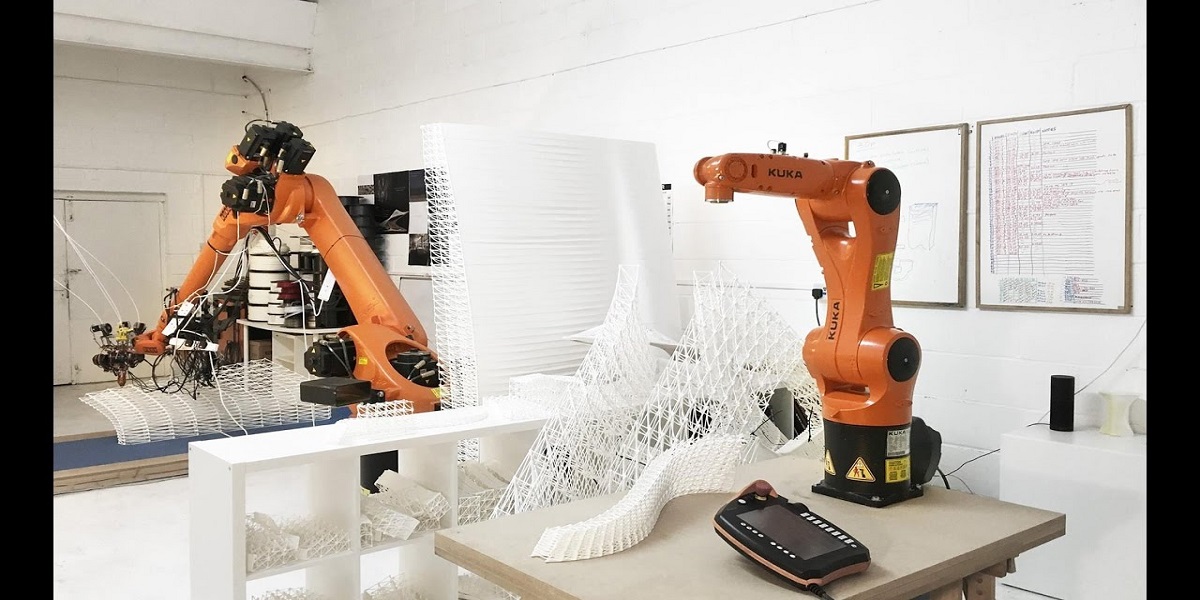
How Artificial Intelligence is Improving The 3D Printing Industry
- By Sammy Ekaran
- 29-09-2020
- Artificial Intelligence
Artificial Intelligence is, at present, one of the most powerful technologies we have. And when combined with 3D printing, a technology that enables one to make what they desire, their impact on the economy and production systems is huge. Let’s see how AI is improving the 3D printing industry.
Artificial Intelligence enables the quality assessment of 3D printing in real-time
Researchers at Oak Ridge National Laboratory have just developed an AI software for 3D printers that assess the quality of objects in real-time without the need for expensive instruments.
This software, named Peregrin, collects and analyzes data in every step of 3D printing. Once the data is collected, the software creates a digital copy of the print to examine its quality. On top of quality control, it is also used to reach new levels of manufacturing quality and automation in future projects.
This AI software is great for powder bed printers that spread layers of powder on a build plate. Currently, the software is being tested on multiple 3D printers to make sure that it’s working as expected.
In addition to that, large parts like the jet turbine blades usually need to be precisely cut, and their manufacturing takes a lot of time. If the final product has even a minor defect, the part product can't be used, which results in wastage of material and time. Computer vision, together with artificial intelligence, can help with monitoring what is happening with the material used for 3D printing and examine the quality of the product at the same time.
AI is Improving the 3D printing process
Before the 3D printing process is even started, AI can be used to analyze the printability of the object. It can also predict the quality of the print, and the entire process can be optimized to avoid any errors. Overall, those improvements help save both time and materials.
A good example of a company using AI is Printsyst, a startup in 3D printing. They use their AI engine to monitor and automate the 3D printing process. This company aims at identifying the functionality of objects and improving the success rate of 3D printing.
There is a printability analysis, which is also called pre-print part evaluation. AI makes it easier to analyze the part that is to be 3D printed and ensure it’s printable, that is, in terms of stability, resilience, and shape. This ensures that the parts produced are of high quality and accurate.
Defect Detection is Easier
AI can be included in a 3D modeling software to monitor how 3D models are designed and help avoid errors in the process. Examples of defects that can be detected by AI software are the defects that can make the model non-printable.
A company called AI build from London has developed an AI-based technology that is automated, and it has a smart extruder that detects problems in designs. They have a robotic-end effector of high precision that is attached to the robotic arms, which allows it to 3D print large projects quickly and at high accuracy.
Precision and Reproducibility in the 3D Printed Parts
AI is also helping with solving the greatest additive manufacturing problems, which is the need for precision and reproducibility of the 3D printed parts. A team from the college of science at Purdue have developed a computer app and a model-building algorithm for geometric accuracy control that is improving the 3D printing capabilities.
This technology corrects 3D models quickly and produces parts of improved geometric accuracy. It ensures that the parts 3D printed conform closely to the required design and remains within the necessary tolerances. This leads to improved consistency and ensures that the model will perform the same when 3D printed with another machine. It makes it possible to 3D print complex designs that are hard in traditional manufacturing.
Predictive Maintenance
Companies and industries are using 3D printing to keep stock of spare parts for their 3D printers and other machines. Those parts can be very costly, and they can't be stored for long because some of them can even rust. Lack of spare parts will bring issues when the machine breaks down and waiting for spare parts to arrive will bring financial risks to the company.
AI can help to predict the life-span of parts and alert the manufacturers before they break. This allows companies to take the necessary steps to prepare new parts beforehand. It's even possible to determine the ideal time for replacing parts.
A combination of AI and 3D printing can even help in autonomous 3D printing, where AI-enabled robots can make decisions on their own and create viable parts themselves without the need for human intervention.
Recent blog
.png)
Top 03 Audio Enhancers to Enhance Your Voice in Minutes
Technology | 18-04-2024.png)
Offshore and Nearshore Mobile App Development: A Guide
Mobile App Development | 17-04-2024.png)




